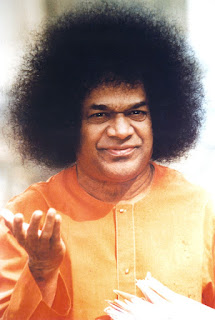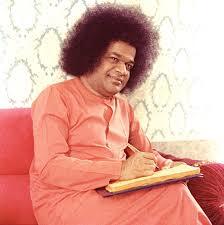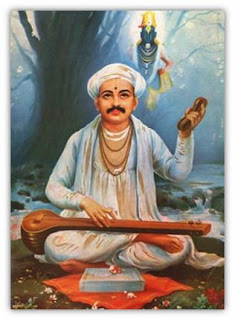Further extract from Sathya Sai Vahini, chapter 1
Vedas reveal the Supreme
“The Vedas
are the authority for the faith of millions. They are the very words of God.
The Hindus believe that the Vedas had
no beginning and will have no end. In the Vedas,
God speaks to humanity. They are not books written by authors. They are
revelations, conferred by God on many inquirers, of the ways of earning the
Supreme Goal.
The Supreme, according to the inheritors of
Indian (Bharathiya) culture, is
Vastness Itself. It rises to the high skies and roams free in that expanse. It
was declared in clear terms long prior to the historical period.
In India itself, many sects were born like
mushrooms from out of the main faith. They tried to pluck by the roots or to
cause mortal damage to the basic concept of Hinduism regarding the Reality, the
Supreme.
But, as in a terrific quake of land the waters
of the sea recede only to return with thousand-fold fury, roaring back upon the
shore it had seemed to quit, this stream of Indian (Bharathiya) wisdom was restored to its pristine glory when it rose
above the confusions and conflicts of history. When the agitations subsided, it
attracted the varied sects that distracted the mind of people and merged them
into its expansive form. The Atma
principle of the Indians is all embracing, all-revealing, all-explaining, and
all-powerful.”
The Atmic principle of Love
“Developing faith in the Atma principle and loving it earnestly — this is the real worship.
The Atma is the one and only Loved
One for humanity. Feel that it is more lovable than any object here or
hereafter — that is the true adoration one can offer to God. This is what the Vedas teach.
The Vedas
do not teach acceptance of a bundle of frightfully hard rules and restrictions;
they do not hold before one a prison house where one is shut in by the bars of
cause and effect.
The supreme secret is: people must live in the
world where they are born like the lotus leaf, which, though born in water,
floats upon it without being affected or wetted by it.
Of course, it is good to love and adore God with
a view to gain some valuable fruit either here or hereafter, but since there is
no fruit or object more valuable than God or more worthwhile than God, the Vedas advise us to love God with no
touch of desire in our minds. Love, since you must love for love’s sake; love
God, since whatever He can give is less than He Himself; love Him alone, with
no other wish or demand. This is the supreme teaching of the Indians (Bharathiyas).”
Introspection
1) Vedas
are not man made, they do not have a set beginning in terms of time, nor do
they have end.
2) Vedas
got transmitted from unknown preceptor to his disciple and from the disciple to
the next generation of disciple and so on.
3) The Supreme, as revealed by Vedas, is vastness itself, anantam or infinite.
4) In spite of efforts by so many sects / cults
which entered India and also efforts by various sects / religion / beliefs
within Bharath itself to erase
the teachings of our vedas, mother shruti faced all the challenges and
remained unchanged, fearless.
5) Swami re-defines devotion when He says,
“Developing faith in the Atma
principle and loving it earnestly — this is the real worship.”
6) Swami reveals about the ONE truth that vedas reveals and Swami’s lines have to
be re quoted as such as there can be no further explanation on His supreme
lines.
I quote Swami
“They teach us that there is One who is the
sovereign behind all those rules and restrictions, One who is the core of each
object, each unit of energy, each particle or atom, One under whose orders
alone the five elements — ether, air, fire, water, earth — do operate. Love Him,
adore Him, worship Him, say the Vedas.
This is the grand philosophy of love as elaborated in the Vedas.”
7) Revealing to us the need to Love God with
no expectation in return, Swami says,
“Love, since you must love for love’s sake; love
God, since whatever He can give is less than He Himself; love Him alone, with
no other wish or demand.”
The
above lines of Swami should stand etched in the core of our heart for our entire
life.
As
Swami says, “Here I am, descended on earth to give you liberation, as a kalpavriskha and you end up asking me
for coffee powder”!!!!
What
if we can get Swami/God Himself eternally, instead of just asking him for
mundane things?
Should
our heart not cry out to our beloved Lord, “I know you would give me anything
that I seek, you have always been doing that for me, but O Lord, today, I seek
nothing but you yourself. Merge in me or let me merge in you, never to return
to this samsara as a limited jiva”?
Love.















